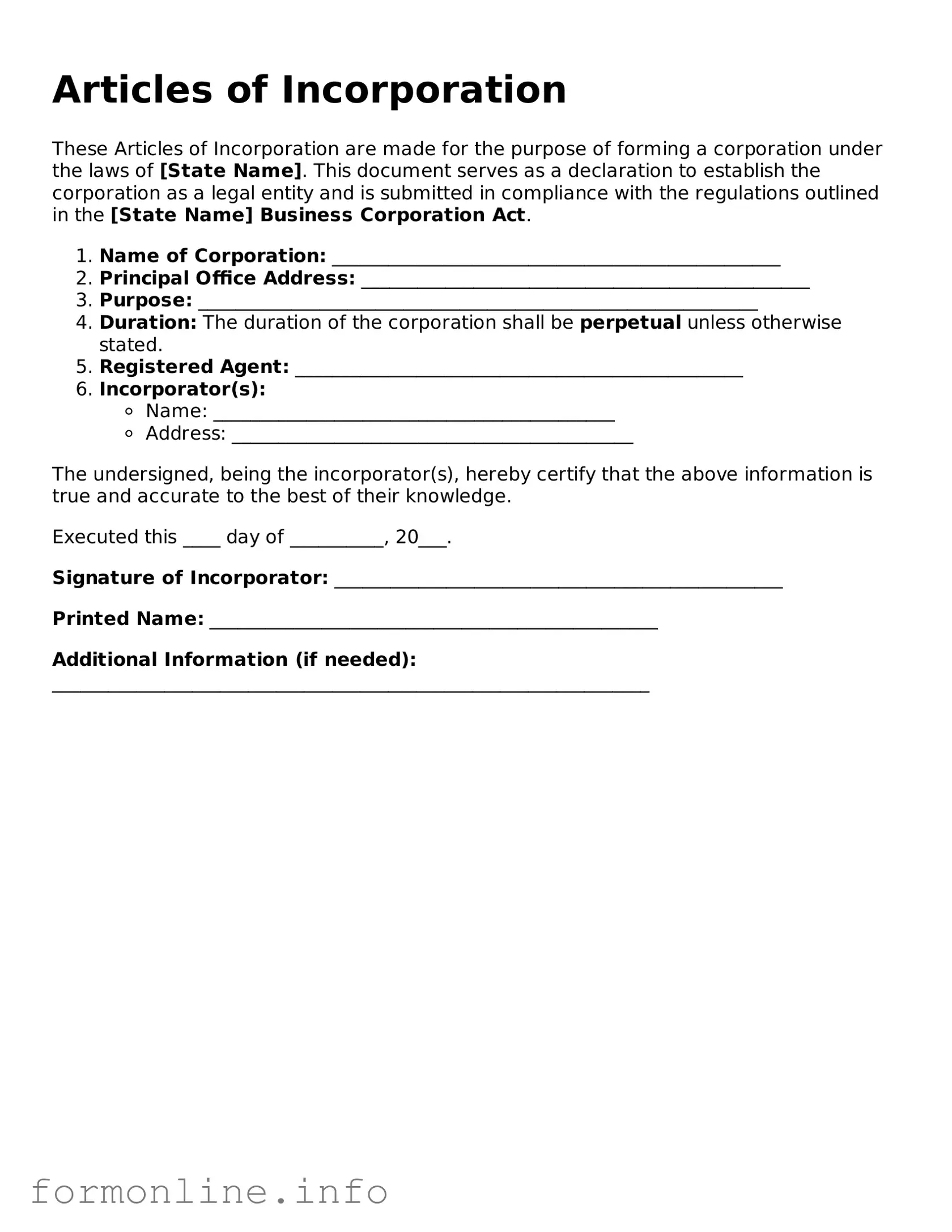Articles of Incorporation
These Articles of Incorporation are made for the purpose of forming a corporation under the laws of [State Name]. This document serves as a declaration to establish the corporation as a legal entity and is submitted in compliance with the regulations outlined in the [State Name] Business Corporation Act.
- Name of Corporation: ________________________________________________
- Principal Office Address: ________________________________________________
- Purpose: ____________________________________________________________
- Duration: The duration of the corporation shall be perpetual unless otherwise stated.
- Registered Agent: ________________________________________________
- Incorporator(s):
- Name: ___________________________________________
- Address: ___________________________________________
The undersigned, being the incorporator(s), hereby certify that the above information is true and accurate to the best of their knowledge.
Executed this ____ day of __________, 20___.
Signature of Incorporator: ________________________________________________
Printed Name: ________________________________________________
Additional Information (if needed): ________________________________________________________________
